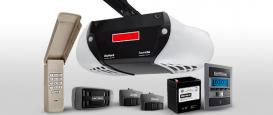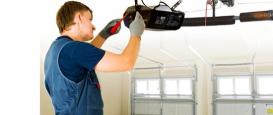Garage Door Springs
Your garage door depends on its springs for a large part of its function. That's why it's important to take good care of them and to address problems the instant they come up. When it comes to your garage door springs, you simply don't want to leave anything to chance. If you're having trouble with your springs or are noticing a problem, don't try and fix it yourself. Always call a professional beforehand and don't risk injury by taking the matter into your own hands. However, as a homeowner, there are a few things you can do to identify and prevent problems from home. Here are a few things to keep aware of when dealing with your garage door's springs.
Type
Your garage door functions in one of two ways. It either uses one torsion spring, located at the top center of your door, or two extension, or 'tension' springs, located at the left and right top corners of your door. While extension springs are less common, most garages will use a torsion spring to facilitate opening and closing cycles. A torsion spring can go for up to 20,000 cycles before maintenance is required, while extension springs can go for half as many cycles before needing attention.
Maintenance
Just like any other important part, springs need care. Because they're tightly wound, and thus very dangerous, homeowners should always use extreme caution when dealing with them. However, keeping your springs well lubricated is an important part of preventing problems down the line. It also keeps your garage door functioning smoothly without making enough noise to bother the neighbors. Keeping your springs lubricated is a good first step to keeping your garage door working seamlessly throughout the year.
Safety Cables
In the case of an issue or break in your springs, two safety cables exist on either side of your garage door to hold it in place. However, these cables exist as a fail-safe and you should not depend on them to keep your door functioning. When a spring breaks, don't waste any time in calling in the experts to replace it. Using your safety cables too much can cause excess strain to be placed on your cables, as well as your tracks. If one cable breaks, it can eventually lead to putting too much pressure on your track, bending it out of shape and causing it to stop working entirely. When it comes to a broken spring, it's always a good idea to act fast.
Balance
Garage door springs help your door maintain its balance. When a door has good balance, it opens and closes without a hitch. When your door is out of balance, problems start to arise, like bent tracks, broken cables, or worse. You can do a simple test to check your garage door's balance by opening and closing it manually. If you notice that something looks or feels off, it's best to go with your instinct and bring in a professional before the damage has a chance to escalate.





